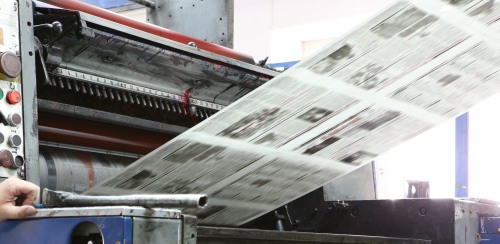Design and Layout
Top Ten Design Mistakes

Here is a list of the top ten design mistakes that amateur designers make.
#1 – Too Crowded
Designs that look like you crammed every available inch of the canvas to say something looks too busy and too crowded to be pleasing. Your message and information is important, but find ways to put it on your design without it looking or feeling crowded.
When the eye has too much to look at, it sees very little.
#2 – Clashing Colors
Everyone has a favorite color and adding color is a fast way to fill up space, but having colors that clash is no way to create stellar designs for your printed projects. Bright, bold colors are considered amateurish shortcuts for good design. Good design allows the elements to grab the eye and focus it where it is supposed to go. Look at the difference in the two examples below:
Learn how to use a color wheel. Here are some links: Basic Color Theory and Understanding the Meaning of Color
#3 – Bad Alignment and Spacing
Alignment and spacing are key to providing a clean design. Makes sure your elements are aligned with each other the way they need to be. You won’t align every element, but badly aligned elements look messy.
Keep your spacing between elements looking consistent. Check how things will look with each other, the page as a whole, and the edge of your page.
#4 – Too Many Font Types
There is a perception that different aspects of your message require a different method of expression, thus the tendency to use different fonts. The problem with using different fonts is that it can quickly look messy.
Indeed, many fonts simply don’t look good together or work with other elements on your design. Keeping the number of fonts you use to a minimum makes for better design.
#5 – Too Many Font Sizes
Similar to using too many font types, having too many font sizes can create a messy looking design. The eye will naturally move to larger text, so having many different sizes of fonts means your text is competing with each other for attention. This means your text doesn’t flow right or bring cohesiveness to your design.
#6 – Wrong Image Selection
Image selection is important for a number of reasons. The image needs to emphasize and enhance your message. Sometimes, designers will have an image (often a personal image) that they love and wish to use in their design—regardless if it is a good fit or not.
Great designers know that image selection is vital to the overall appeal and impact of their design. When looking at an image, it is important to look at how busy the image is, the colors, and where the eye naturally falls on the image. Choosing an image, for example, that has clashing colors with the rest of your design will make your printed material less appealing to the eye.
#7 – Using Wrong Proportions
Proportions—the sizes of your images, shapes, and textboxes—is important to the visual appeal of your design. Amateur designers will often stretch an image to fit a particular space, elongating or squishing the image so that it doesn’t look natural.
The proper method would be to increase the image size and then crop it down to size so that the proportions are not messed with. If a textbox and a corresponding image are out of proportion with each other, this too can create a clash to the natural eye.
#8 – Refusing to Leverage White Space
White space is popular among the minimalist design techniques. White space automatically draws the eye to the area you feel is most important. White space doesn’t have to be white, but it is the plain space in your background. Using more space between elements gives your design a cleaner look.
#9 – Designing around the Wrong Element
Design around your message. An image needs to promote that message as do the colors you use. Never design around a favorite photo or a catch phrase no one has ever heard of or doesn’t understand. Don’t use special effects that intrigue you at the expense of the message. For example, sometimes adding a shadow or a 3-D effect can be distracting to the eye, causing your message to fight for attention with the special effect.
#10 – Forgetting Who Your Design Is For
You are not creating a design for you (in most cases). Usually, your printed material is targeted towards someone else. The text you write, the images you use, and even the colors you use are to attract the interest of someone else. Don’t forget that.


